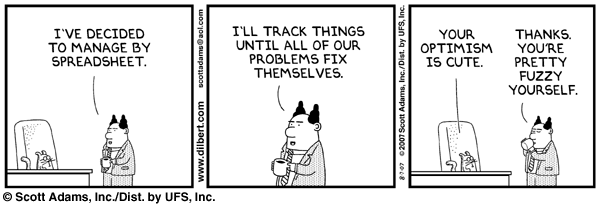As a retail marketing leader, you’re challenged to get a full grasp on retail metrics as a driver of strategy, performance and continual improvement. You want to ensure you have the right metrics, but you also have to ensure you have a dashboard view that’s visible to key stakeholders.

- Most marketers don’t know which metrics their stakeholders care about
- Less than 10% of senior leadership are relying on marketing data to make decisions
- The C-suite can’t relate marketing activity-based metrics to business outcomes
Take a look at the infographic on the left, created by MarketingProfs, outlining the results of the survey.
So, what’s the current state in retail marketing measurement? It varies across the board. Different metrics serve different purposes:
- Forecasting Metrics. Most retailers would be happy with 60% accuracy — though such imprecision is hardly ideal. With these measures, you need to forecast turnover and inventory requirements. Otherwise, you can suffer stockouts or overstocks.
- Media Metrics. The objective of media metrics is to determine the value of each media channel in driving sales. And while retailers often still heavily rely on print, digital channels can cost one-tenth to one-hundredth the amount for the same outcome. You have to track your ad to sales ratio to ensure you are investing in the right media.
- Operational Metrics. When you take a more sophisticated view, you track your market basket. You want to know your average basket value and what drives customers to come to your store. You may also look at lift metrics, which can be determined through multiple means, to clarify what actions drive results in a particular promotion.
- Brand metrics. Brand people look at market share. If you’re interested in these metrics, you may also measure brand to increase customer loyalty and improve long-term health.
What’s wrong with metrics and measurement today? The big issue is inconsistency of measurement. Rather than looking for improvement against a defined measure, marketing departments relentlessly pursue the perfect measure.
However, every time you change the metric you’re tracking, you start over in terms of trend analysis. You whipsaw the organization on what’s important; you lose track of what’s important.
I learned this the hard way when I worked for Sears years ago. Measurement focus continually shifted from sales to margin to turnover. But focus on one factor would overturn the others. And while it may be important to track them all simultaneously, it’s also important to remain consistent in terms of how you weight these objectives. Shift your focus too severely and there’s no historical pattern to track and the future predictor becomes unreliable.
Of course, most retailers can’t live off one measure. Market share is a long term measure. You have some promotional or event metrics. You need different types of measures. The key is consistency. There is no wrong approach in terms of which measures you decide to track. But complexity can be a problem. It’s best to be clear on what you need to measure and stick with it over time.
What did the marketing performance management survey find? It found that the “A” marketers are actually moving two of the most important business outcome needles: market share and customer satisfaction/loyalty. They’re doing this by establishing clear data chains between marketing activities, objectives, and business outcomes to produce actionable dashboards!
Why do you need a scorecard or dashboard view of your metrics? This is the job saver! The dashboard/scorecard approach captures and presents your retail KPIs (key performance indicators). It’s something executives and other stakeholders can get comfortable with across the company. It tells you where you stand — and gives you a strong sense of where you are headed. The c-suite needs this – without it, there’s no accountability. Provide good, actionable dashboards and win the hearts and minds of the C-suite.
While some companies rely on a combination of Excel, PowerPoint, Word files and SharePoint to make their measures accessible to key decision makers, it’s clear this approach has severe limitations in terms of keeping measures updated and accurate. Just imagine for a second if your boss managed by spreadsheet!
Advanced scorecarding revolves around providing a visually rich and easily revised presentation of KPIs. Your Digital Wall should provide retrospective views of past performance lined up against prospective forecasts. It should enable you to easily and clearly compare performance in different channels.
Of course, it also provides a compelling venue for other metrics — be they market basket analysis or lift models and measures. Even brand metrics can be vividly laid out for active consideration.
Ultimately, rigorous management of marketing metrics enables you to enhance forecast accuracy — increasing inventory turns while reducing your ad spend. You can isolate promotional effects such as halo, cannibalization, and pull forward. You can ensure you are taking the necessary steps to maximize traffic and sales. You’ll have an effective media mix that strikes the right balance between attracting new customers and deepening loyalty with existing ones.
Whether you’re a marketer for WalMart, Kohl’s, Old Navy or a smaller retailer, your ability to optimize your marketing spend comes down to consistent measurement, analysis and action. Our experience with retailers indicates that marketing organizations can go from a disjointed and uncertain state to one in which they have clarity and confidence. Indeed, you can create an executable dashboard the provides both short term insights and long-term perspective.
Learn how CrossCap makes retail marketers look like superheroes: Visit our retail metrics page or contact us.
About the Author:
Darrell Fry
Retail guru, Darrell Fry, brings 36 years of valuable retail experience to CrossCap, garnered primarily through his position as VP of Advertising Production at both OfficeMax and Sears. Darrell was inspired to join CrossCap in 2007 based on his experience installing and utilizing our system as one of our clients. Sold by the efficiency and originality of CrossCap’s product, Darrell holds that unlike many EMM Systems, CrossCap’s system “thinks like a retailer”. As VP of Customer Experience, Darrell is essential towards helping clients utilize our software capabilities most effectively and developing client work processes that are based on best industry practices.


